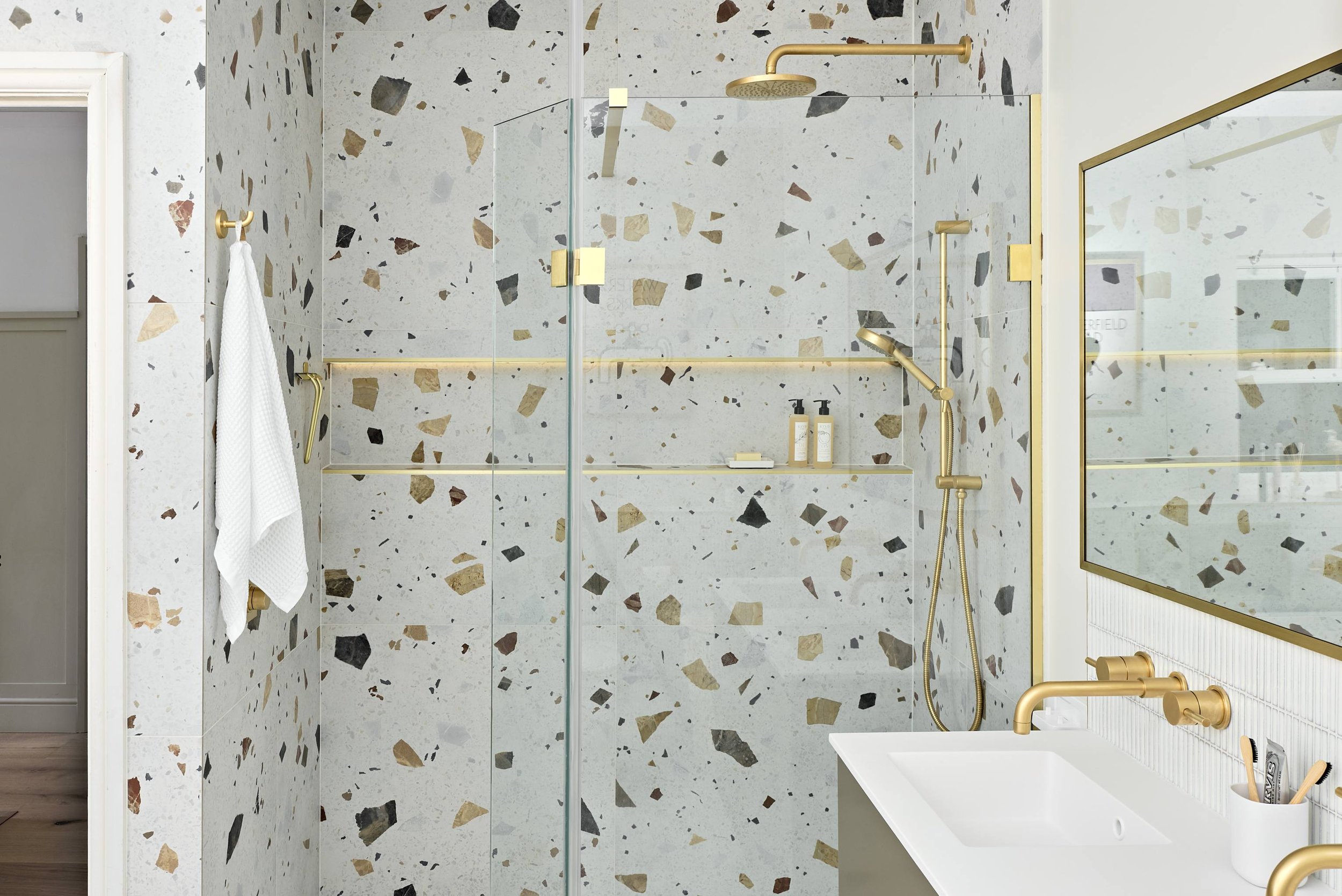Designer advice: 10 most commonly asked bathroom questions
With over 30 years experience designing bathrooms, we understand that the process can be daunting and at times confusing. Our designers are experts on all aspects of bathrooms so we caught up with Senior Designer Jo, from Ripples London, answer some of the most commonly asked bathroom-related questions.
Question 1 | What factors should I take into consideration before starting a bathroom design project?
There are a number of key considerations you should think about before starting a bathroom renovation project. My top 4 are:
When are you thinking about doing the work?
Have you considered lead times for products (this can be up to 8 weeks for some items) and also availability for installation teams?
Who is going to be using the bathroom: do you need to future proof it, does it need to be a child-friendly family bathroom, or is it an adult only space to relax in at the end of the day?
Do you have the finances in place to do the work? Have you considered what the average cost of a bathroom (including product and installation) could be?
Question 2 | With Pinterest, Instagram and other great tools, can’t I just design my bathroom myself? Do I really need a bathroom designer?
Although there are a lot of great tools out there to give you style inspiration these days, there are so many other things to be considered when designing a bathroom. Considerations around plumbing, electrics and room layout are best handled by a professional. If you are anything like me, you will have a lot of images on your Pinterest board or magazine collection, encompassing a number of different styles. A good designer can work with you to narrow down your choices, incorporating your inspiration into one cohesive scheme. Designers can also take the stress out of sourcing all of the product for your space, using their specialist knowledge to find the products which will work best for you. This will give you more time to focus on the more fun parts of your project!
Question 3 | I am overwhelmed with choice, how do I narrow down my options?
There is a lot of choice out there so it is easy to feel overwhelmed. How I normally work with a client is to see if there is a running theme in their inspirational images. My advice would then be to decide on one element of the bathroom which is completely non-negotiable. Perhaps you’ve fallen in love with a roll-top bath, obsessed over a statement tile or you’re certain you want a round mirror in your room. Usually, deciding on one element of the bathroom can help guide the rest.
Question 4 | Should I use big or small tiles in a smaller bathroom?
Generally, I advise using larger tiles, no matter the size of the space. This reduces the amount of grout needed which makes for easier cleaning and fewer grout lines give a more polished look. That being said, with the amount of beautiful feature tiles out there, a mix of the two can work well. In a smaller bathroom it is more important to consider how product and tiles align, the areas of the room which are (and are not) going to be tiled and the grout colour.
Question 5 | I have a set budget for my bathroom project. Which areas can I save on and which should I splurge on?
This is largely down to personal choice and the way you envisage using your bathroom. Personally, I always think it is worth splurging on brassware as this is handled every day and you will quickly tell if the quality is not up to scratch. I also think quality tiles are really worth investing in as low quality tiles can almost look almost pixilated and can cheapen the overall aesthetic of the space. Part tiling the bathroom is a great way to introduce higher quality and more interesting tiles without having to spend too much. I also believe it’s important to invest in multiple lighting options as it’s so key to the useability and feeling of the bathroom.
If working to a tighter budget, I always advise sticking to high quality brands but choosing their entry level products as a means of making a saving. The materials will generally be the same and they will have the same guarantees but you may just miss out on having the very latest pattern or design.
Question 6 | I want to create an on-trend bathroom but I don't want it to date. What are my options?
Creating an on-trend bathroom that won't date is always tricky as the whole concept of being on trend is very much like fashion – it's constantly changing! That being said there are ways to get around it. Firstly, make sure you love the trend. A bathroom generally only gets updated every 10 years so it’s a big commitment to something if you are not completely sold on it. Secondly, I usually advise taking elements of the current trends but toning them down slightly. Perhaps you could go for timeless bathroom furniture and sanitaryware and incorporate your preferred trend though blinds, towels and accessories.
Question 7 | What lighting do I need in a bathroom?
The first level of lighting needed for all bathrooms will be either downlights or a central light. This is controlled by one switch and gives you the overall lighting needed for general use and cleaning. The next level of lighting is task lighting. This could include lighting within your mirror or wall lights either side of the mirror. Wherever possible, go for side rather than top lighting to give a good overall lighting with minimal shadows – perfect for getting ready on dark winter mornings! The next level of lighting to consider is mood lighting. Low level lighting is key in a bathroom especially one with a bath or in an en-suite. This can be incorporated in soft spot lighting or strip lighting on top of recesses, by a bath or underneath a vanity unit. Having this on a separate switch means early mornings, late nights and even any middle-of-the-night trips to the bathroom are not disturbed by bright lights coming on.
In a family bathroom, you may also want to consider a PIR (passive infrared) sensor. As children get older they can then go into the bathroom at night on their own and lights will automatically come on. This is also great from an electricity-saving point of view.
Question 8 | How much should I expect to pay for bathroom products and installation?
A bathroom project could be almost limitless and is very much dependent on the style and finish you are hoping to achieve. You can usually expect a 50/50 split of cost across product and installation.
Key considerations to take into account when deciding on your bathroom budget include:
Brassware finish - anything other than chrome is classed as ‘special finish’ and will be more highly priced.
Classic or traditional styles generally work out slightly more expensive than more modern styles.
Whether you would like a freestanding bath or a built in bath. Freestanding options generally cost more.
Question 9 | How long will my bathroom take to install?
On average a bathroom installation takes around 3 weeks. This is a surprise to a lot of clients as they often do not realise that a good installation team will need to strip the room back to the bare bones in order to transform it into a beautiful, finished bathroom.
Question 10 | How can I introduce colour easily to my bathroom design?
The simplest way to add some colour into your bathroom if you are a little nervous is to part tile the bathroom then paint the walls in a more timeless colour. This can easily be changed over time. Other options include:
Freestanding baths – painting the bath exterior can add some interest and add a focal point within the bathroom
Vanity units – many suppliers offer a bespoke colour service meaning you can colour match multiple products within your space
Plants - add spaces for plant life in your bathroom. Plants add a softness, a splash of colour and personally I find it a good challenge to keep them alive!








